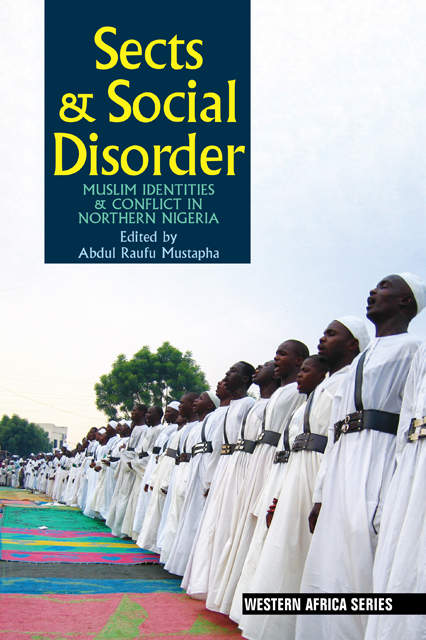Book contents
- Frontmatter
- Dedication
- Contents
- List of Maps, Figures & Tables
- Notes on Contributors
- Foreword by Muhammad Sani Umar
- Acknowledgements
- Glossary
- 1 Introduction: Interpreting Islam: Sufis, Salafists, Shi’ites & Islamists in northern Nigeria
- 2 From dissent to dissidence: The genesis & development of reformist Islamic groups in northern Nigeria
- 3 Contemporary Islamic sects & groups in northern Nigeria
- 4 Experiencing inequality at close range: Almajiri students & Qur’anic schools in Kano
- 5 ‘Marginal Muslims’: Ethnic identity & the Umma in Kano
- 6 Understanding Boko Haram
- 7 Conclusion: Religious sectarianism, poor governance & conflict
- Index
6 - Understanding Boko Haram
Published online by Cambridge University Press: 24 February 2023
- Frontmatter
- Dedication
- Contents
- List of Maps, Figures & Tables
- Notes on Contributors
- Foreword by Muhammad Sani Umar
- Acknowledgements
- Glossary
- 1 Introduction: Interpreting Islam: Sufis, Salafists, Shi’ites & Islamists in northern Nigeria
- 2 From dissent to dissidence: The genesis & development of reformist Islamic groups in northern Nigeria
- 3 Contemporary Islamic sects & groups in northern Nigeria
- 4 Experiencing inequality at close range: Almajiri students & Qur’anic schools in Kano
- 5 ‘Marginal Muslims’: Ethnic identity & the Umma in Kano
- 6 Understanding Boko Haram
- 7 Conclusion: Religious sectarianism, poor governance & conflict
- Index
Summary
Introduction
By 2003, the cycle of violence that we now identify with Boko Haram had started in the north-east. Between that year and 2014, the group metamorphosed from a group of angry Islamist young men wielding sticks on the streets of Maiduguri to an entrenched insurgency capable of deploying Armoured Personnel Carriers (APCs) and Somalia-type mounted machine guns or ‘technicals’, and engaged in ruthless bombing campaigns across numerous Nigerian cities. It is a testament to the poor management of the situation by political and military authorities at all levels of the Nigerian federation that this transformation from a rag-tag mob in 2003 to a so-called Caliphate in 2014 was able to take place unchecked. Given the level of misinformation, biased and fanciful reporting and politically motivated reporting on Boko Haram, in this chapter I draw together as much of the publicly available evidence on the group as is available. This then forms the basis of my analysis of the group and its campaign of violence. The history of the establishment and transformation of Boko Haram has been recounted in some detail in A. Mohammed (2010), Salkida (2013a, 2013b), Higazi (2013a, 2013b) and Pérouse de Montclos (2014). Their narratives do not always fully agree with each other, but the general thrust of their accounts is fairly consistent.
On the other hand, many international narratives are beclouded by Western policy concerns about the threat of Islamist terrorism. Worse still, as Pérouse de Montclos (2014b, 2, 7) rightly points out, most writings on Boko Haram are pure speculation from analysts with little familiarity with the local terrain. At best, the resulting analysis amounts to only ‘some evidence and a lot of confusion’. Nowhere is such speculative confusion more apparent than in the analysis of the CNN journalists, Lah and Johnston (2014) who argue that Boko Haram is engaged in kidnapping and piracy off the Gulf of Guinea, or in the sensationalist accounts of Jacob Zenn (2014a, 2014b) who embellishes events with an excessively Western security mind-set. These cobwebs of confusion, along with the difficulty of researching such a violent group, make it difficult to easily gather the necessary evidence for our analysis.
Early history
In the course of the Salafi conflict with the Sufis (see Chapter 3), Salafi scholars like Shaikh Ja’afar Mahmud Adam of Kano broke away from Izala and formed their own independent organizations.
- Type
- Chapter
- Information
- Sects and Social DisorderMuslim Identities and Conflict in Northern Nigeria, pp. 147 - 198Publisher: Boydell & BrewerPrint publication year: 2014
- 11
- Cited by



